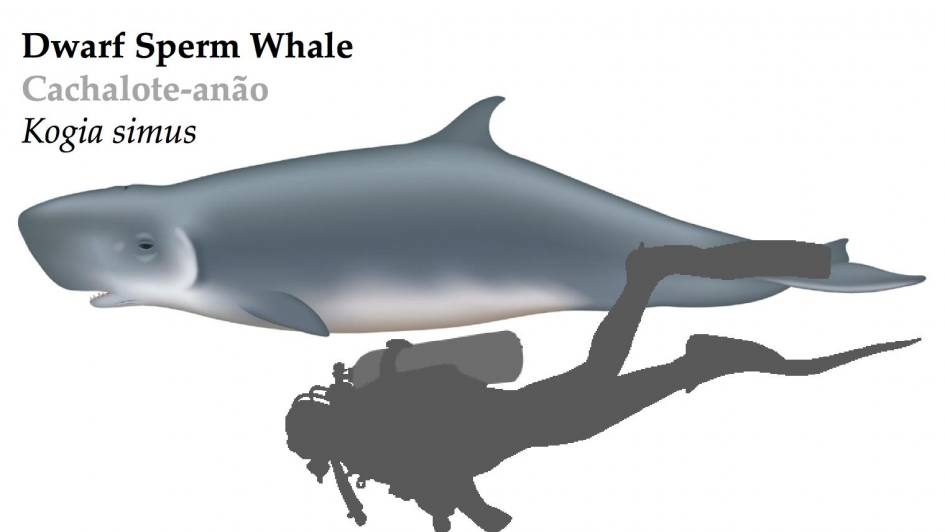
Dwarf Sperm Whale, Kogia sima, is a rarely seen, unobtrusive dolphin-sized cetacean. Similarly to Pygmy Sperm Whales (Kogia breviceps), they share some common characteristics with Sperm Whales (Physeter macrocephalus).
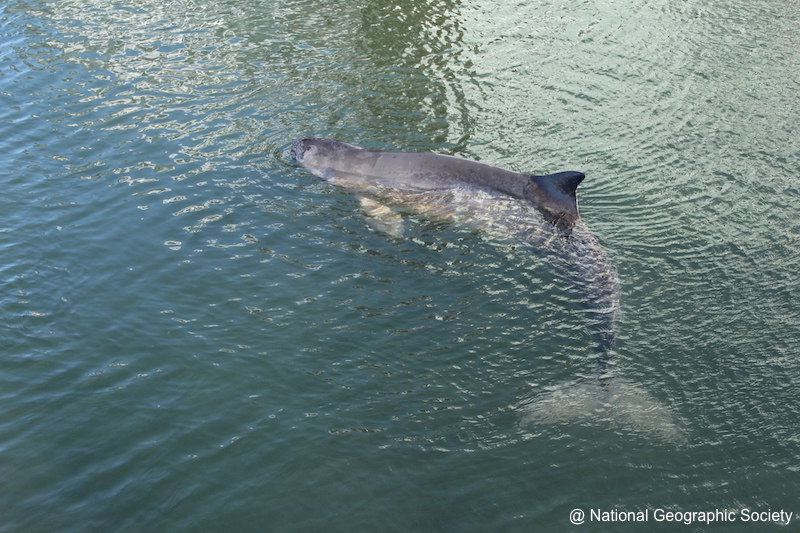
CHARACTERISTICS
- Latin name : Kogia sima
- Suborder : Odotonceti
- Family: Kogiidae
- Length : 2.8 meters
- Weight : up to 270 kg
- Dive time : up to 25 minutes
- Dive depth: Depth unknown but estimated up to 1 500 meters with an average at around 300 meters.
- IUCN Status: Data deficient
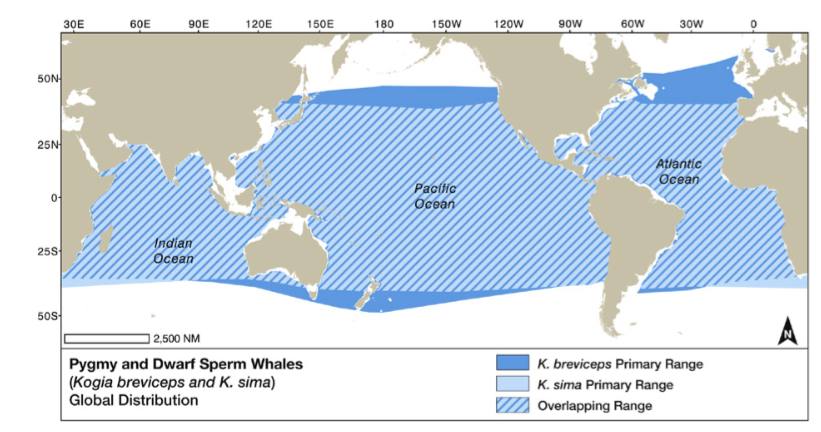
Worldwide distribution of Dwarf Sperm Whale (Kogia sima). Encyclopedia of Marine Mammals IIIrd Ed. Bernd Würsig, I. G. M. Thewissen & KIT M. Kovacs
DESCRIPTION
Color: Soft blue-grey above and pinkish on the ventral part. A light « false gill » crescent mark may be present between the eye and the flipper.
Head: Square head filled with spermaceti. The Kogiidae species have the blowhole on the left side of the tip of the snout, like Sperm Whales (Physeter macrocephalus).
Fins: Small broad-based triangular to hook-shaped dorsal fin. The caudal fin is concave and slightly notched.
Teeth: 8 to 13 pairs of teeth on the lower jaw, and almost always 3 pairs in the upper jaw.
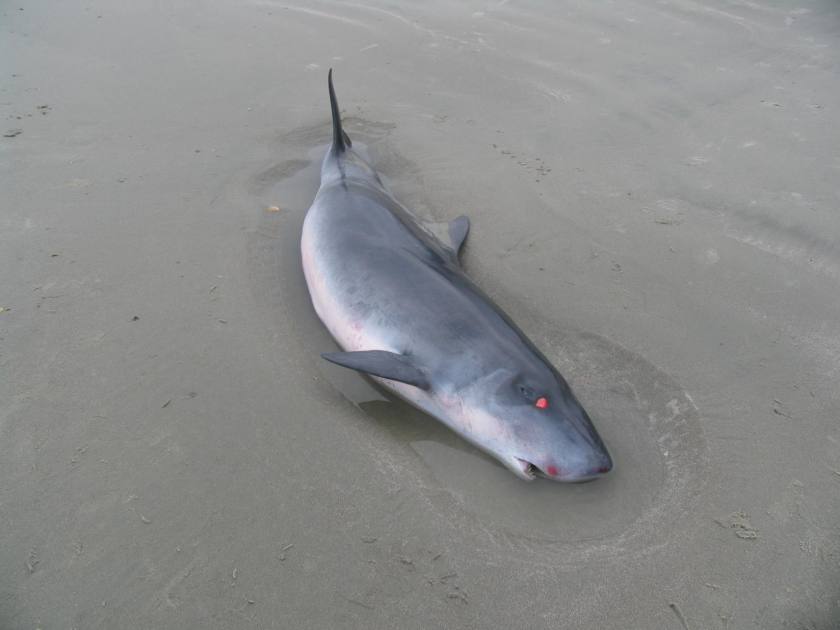
A Dwarf Sperm Whale stranded on a US beach. As for other cryptic species, stranded specimens are a valuable occasion to obtain scientific data on rarely sighted cetaceans. Source: NOAA.
LIFE HISTORY
DIET
Dwarf Sperm Whales feed predominantly on squid but also on bottom fish and crabs.
REPRODUCTION
Sexual maturity is reached at the age of 5 years (female) and 3 years old (male).The gestation lasts about 9-10 months and can apparently occurs every year, because the nursing lasts one year. At birth, calves measure around one meter in length. Breeding takes place in autumn while calving occurs in summer.
SOCIAL BEHAVIOR
Dwarf Sperm Whales are usually solitary animals but can form groups up to 10 individual strong. Dwarf Sperm Whale are quite shy and tend to avoid vessels. They generally rest at the surface or roll lethargically for a few minutes between dives. Unique to the Kogiidae species, appended to the small intestine near the anus, they have a sac filled of a dense red-brown fluid. If the animal is stress it release the reddish fluid to distract predators such as orcas or sharks.
VOCAL BEHAVIOR
Dwarf Sperm Whales are apparently not very vocal, especially at the surface. This is believed to part of their predator avoidance strategy. They do emit clicks to locate their preys through echolocation. Here you can listen to clicks attributed to Pygmy Sperm Whales by the University of California San Diego, although it is still not possible to distinguish the vocalization of the two species.
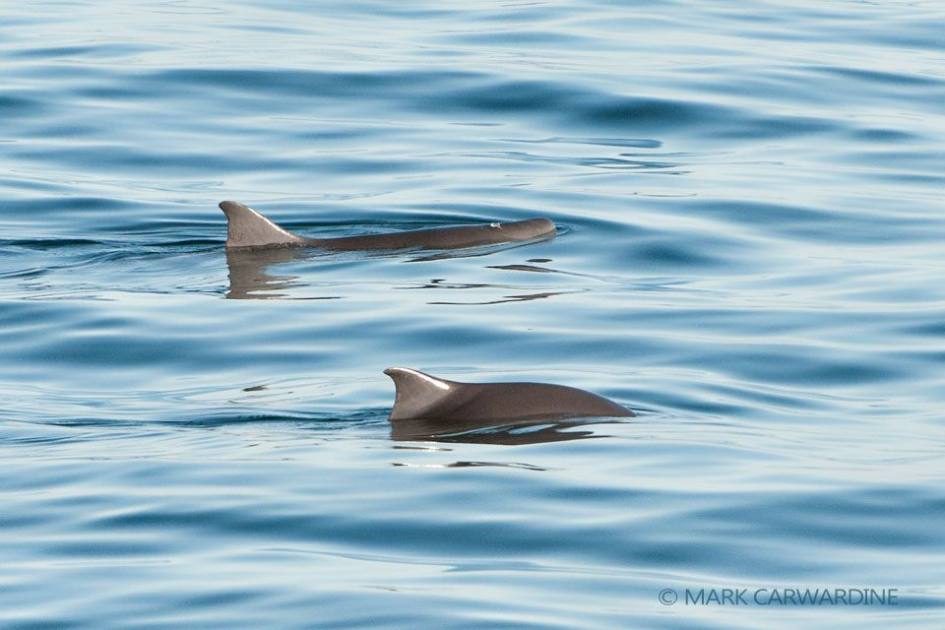












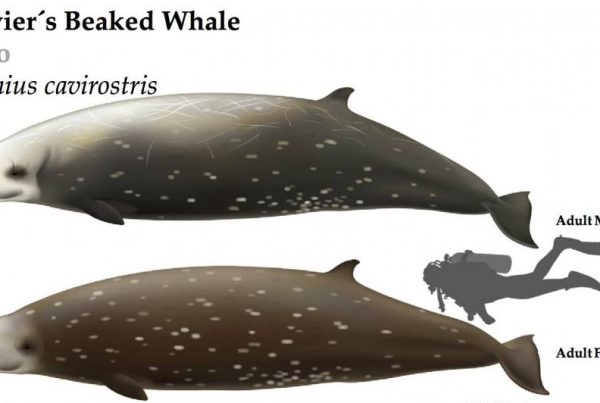
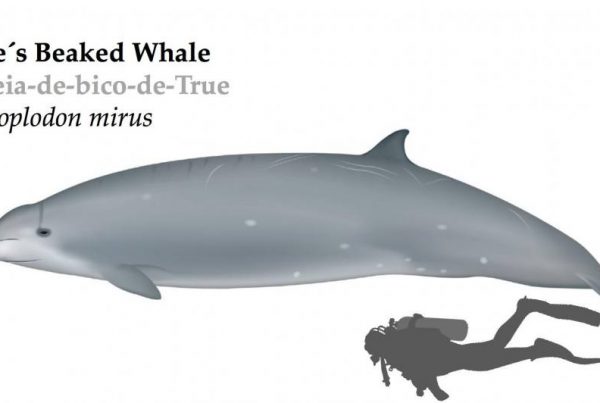
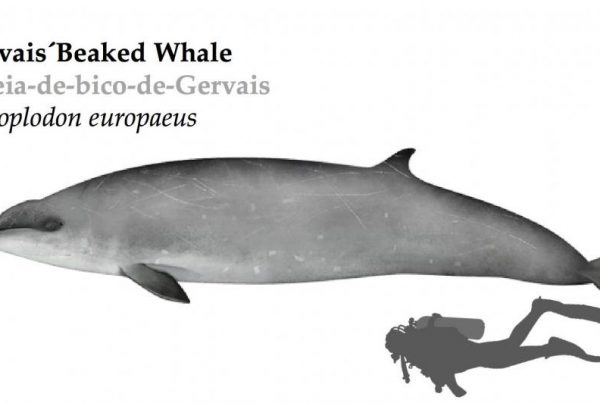



Your thoughts on this?